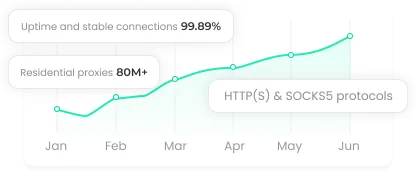How to Scrape Websites Effectively with BeautifulSoup
Web scraping isn’t just a skill—it’s a superpower in 2025. From market research to trend tracking, the ability to extract meaningful data from websites is gold. And if you’re diving into Python, BeautifulSoup is one of the sharpest tools in your kit. Lightweight, flexible, and surprisingly intuitive, it turns messy HTML into structured data you can actually use.

What Is BeautifulSoup Really
Think of BeautifulSoup as a translator between Python and web pages. It parses HTML and XML documents, letting you navigate complex structures, pull out exactly what you need, and skip the clutter.
Its syntax is "Pythonic," meaning it reads almost like plain English—perfect for beginners but powerful enough for seasoned developers. Whether you're scraping news portals, blogs, or recipe sites, BeautifulSoup provides a stable foundation. The library's documentation is packed with examples, making it easy to handle everything from a simple page to nested HTML chaos.
Why BeautifulSoup Shines
Is BeautifulSoup good for scraping in 2025? Absolutely—but with context. It excels in small to medium-scale projects where speed and flexibility matter. Developers rely on it to extract:
Blog posts and article content
Product details from e-commerce sites
Structured data like recipes or reviews
It's especially useful for sites with nested HTML that can stump automated tools. For example, scraping BBC recipes? BeautifulSoup's community and official guides have step-by-step tutorials ready.
Getting Started with BeautifulSoup
Here's the practical flow for any web scraping project:
Fetch the HTML content of your target page. Python's requests library works perfectly here.
Parse the HTML with BeautifulSoup:
soup = BeautifulSoup(html_content, 'html.parser')
Navigate and extract the data using methods like find() and find_all().
This method ensures a reliable pipeline for scraping and storing website content. For tricky edge cases—think dynamically loaded content or unusual tag structures—the BeautifulSoup documentation provides strategies to overcome them.
Legal and Ethical Considerations
Using BeautifulSoup is legal. Scraping websites? That's where nuance comes in. Always check:
Terms of Service of the target website
Robots.txt files to see which pages are allowed
Ethical scraping practices like adding request delays and avoiding heavy server loads
Scraping responsibly protects your access and keeps your projects sustainable.
Troubleshooting Common Challenges
BeautifulSoup is powerful—but not magical. Here are common hurdles and ways to tackle them:
Dynamic content: JavaScript-rendered pages may require tools like Selenium or Playwright alongside BeautifulSoup.
Anti-bot measures: Rate limiting, CAPTCHAs, or IP bans are common. Rotate IPs and throttle requests to stay under the radar.
Structural changes: Websites evolve. Build scrapers that are resilient to minor HTML shifts.
Pairing BeautifulSoup with other Python tools ensures smoother data extraction when standard methods fall short.
BeautifulSoup vs. Scrapy
Quick decision guide:
BeautifulSoup: Best for simple to moderate tasks, fast setup, flexible. Ideal for small-scale scraping or one-off projects.
Scrapy: Full-scale framework with asynchronous requests, data pipelines, and middleware. Best for enterprise-level crawlers.
For a Python program that scrapes a few dozen pages—or even a few thousand—BeautifulSoup often hits the sweet spot. For massive, ongoing projects, Scrapy scales better.
Pro Tips for Efficient Scraping
Combine BeautifulSoup with regular expressions for precise extraction.
Clean and structure your data immediately after scraping.
Use semantic tags like <article> and <section> to scrape content reliably—perfect for recipe sites like BBC.
Always reference the official documentation when tackling unusual page layouts.
Conclusion
In 2025, BeautifulSoup is more than relevant—it's crucial. Its simplicity, versatility, and strong community support make it a top choice for both newcomers and pros.
Whether you're scraping BBC recipes, building Python programs for content analysis, or weighing the best tools for your next project, BeautifulSoup delivers reliable, actionable results without overcomplicating things.


















































